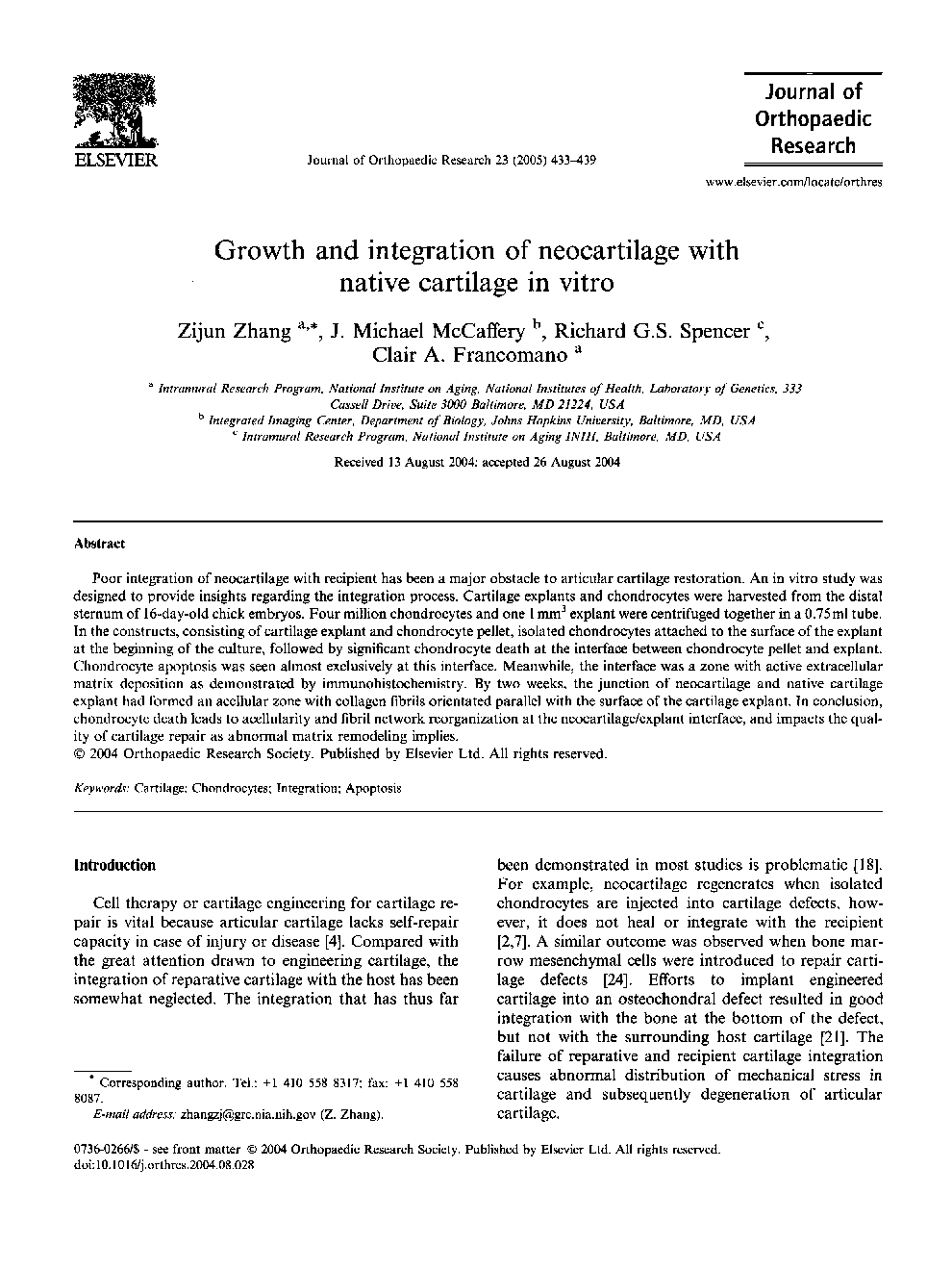| Article ID | Journal | Published Year | Pages | File Type |
|---|---|---|---|---|
| 9354080 | Journal of Orthopaedic Research | 2005 | 7 Pages |
Abstract
Poor integration of neocartilage with recipient has been a major obstacle to articular cartilage restoration. An in vitro study was designed to provide insights regarding the integration process. Cartilage explants and chondrocytes were harvested from the distal sternum of 16-day-old chick embryos. Four million chondrocytes and one 1Â mm3 explant were centrifuged together in a 0.75Â ml tube. In the constructs, consisting of cartilage explant and chondrocyte pellet, isolated chondrocytes attached to the surface of the explant at the beginning of the culture, followed by significant chondrocyte death at the interface between chondrocyte pellet and explant. Chondrocyte apoptosis was seen almost exclusively at this interface. Meanwhile, the interface was a zone with active extracellular matrix deposition as demonstrated by immunohistochemistry. By two weeks, the junction of neocartilage and native cartilage explant had formed an acellular zone with collagen fibrils orientated parallel with the surface of the cartilage explant. In conclusion, chondrocyte death leads to acellularity and fibril network reorganization at the neocartilage/explant interface, and impacts the quality of cartilage repair as abnormal matrix remodeling implies.
Related Topics
Health Sciences
Medicine and Dentistry
Orthopedics, Sports Medicine and Rehabilitation
Authors
Zijun Zhang, J. Michael McCaffery, Richard G.S. Spencer, Clair A. Francomano,
